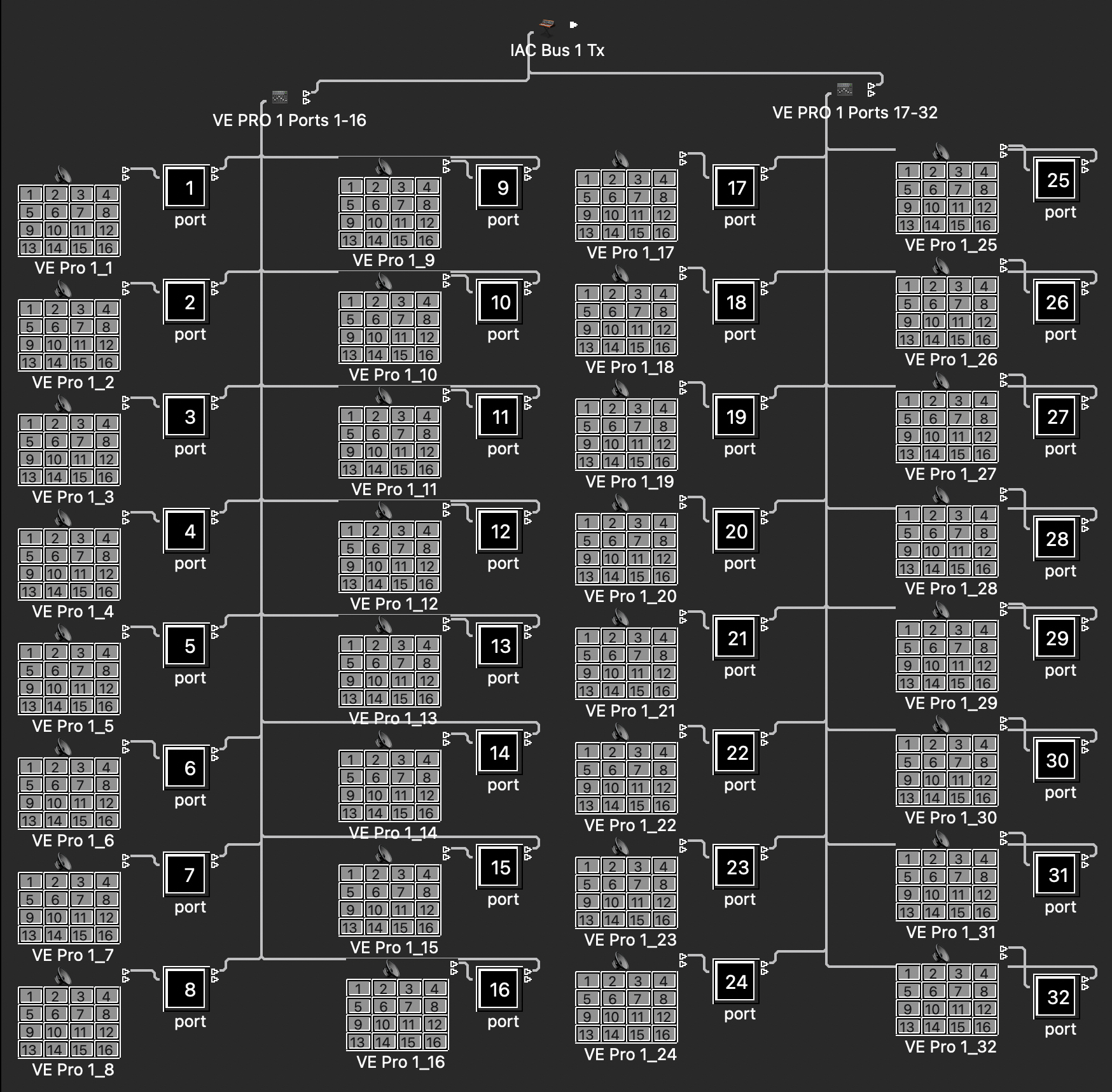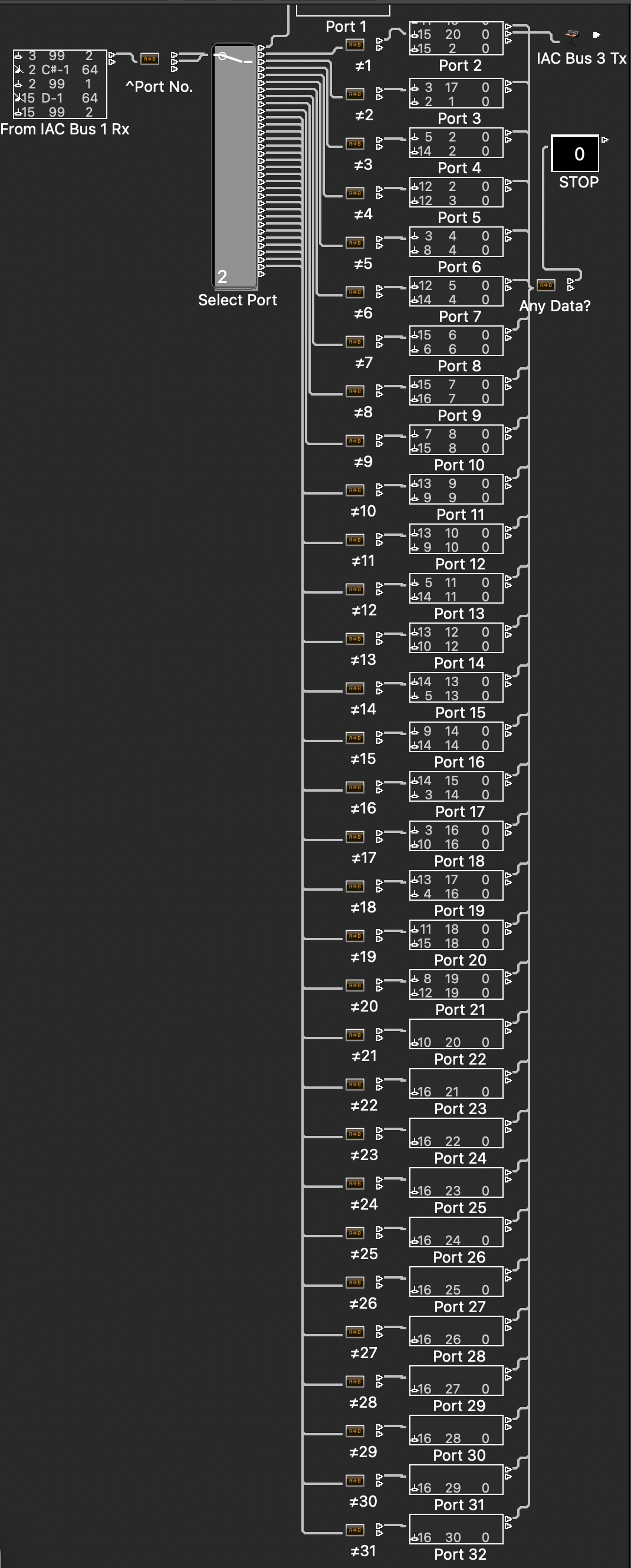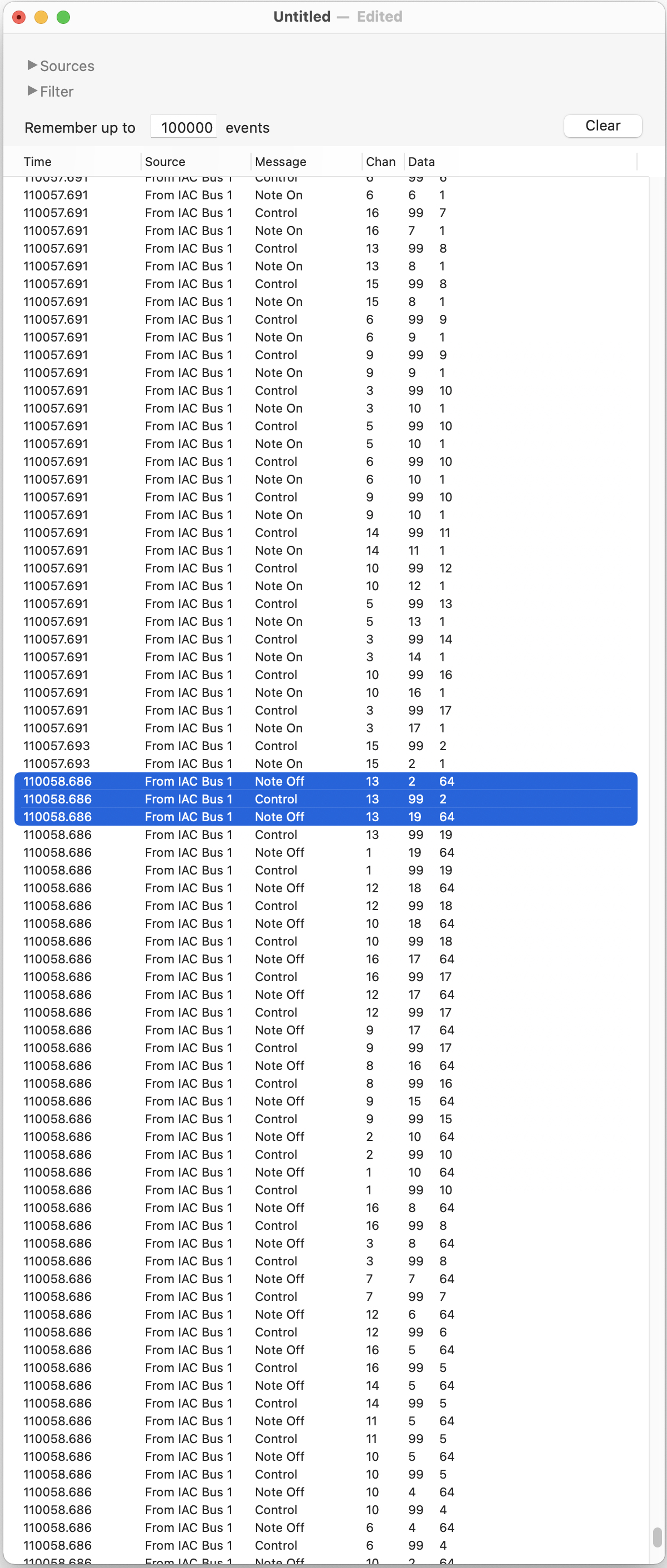While we're waiting for Apple to fix up AUv3 properly, some users might be tempted to revert to using VEPro AUv2 with a multiport workaround. But there's a serious risk lurking in this case. One particular 3rd party "workaround" for VEP (AUv2) multiport operation that's been noisily promoted turns out to be snake oil. In fact, tests show that its performance is substantially inferior to VSL's original workaround. I won't name this 3rd party here for obvious reasons.
Hypothesis
MIDI 1 is essentially a so-called Character Count Protocol (CCP), in which the meaning of a serial stream of MIDI data can be parsed only according to the relative position of MIDI bytes (or 'characters') in a sequence. By contrast, more modern serial data communications use so-called Bit-Oriented Protocols (BOP), in which information is organised within an 'unbreakable' data frame or "packet" usually much larger than a single MIDI event. In Logic's Environment, it appears that MIDI events are organised and administered only as individual events consisting of 2 or 3 MIDI bytes, with no way of keeping multiple events locked together when merging multiple streams.
VSL's original VEPro multiport workaround employs a dual MIDI event construct; the 1st event specifies the port number to which the 2nd event is to be routed. Alas, there is apparently no way in which Logic's Environment can guarantee to keep these two particular MIDI events together without the possibility of another MIDI event from a different source becoming inserted between them when streams are merged. If such an accidental insertion occurs, subsequent parsing will be thrown into error and the 2nd MIDI event will be routed wrongly.
Simply by virtue of the very high speed operation of the Environment's Transformer, the two MIDI events of the dual event construct are extremely close together in time; hence it's not very likely - though not impossible - that the two events will become separated in a merged stream of multiple MIDI events from many sources. VSL wisely recommend that their original workaround scheme is used for no more than 16 ports per VEP instance.
The 3rd party workaround is not superior to VSL's workaround; the former does nothing to address the vulnerabilty of the Environment's CCP to loss of the all-important dual-event sequence, caused by other events getting in between the two events. I cannot see any possibility of devising a functional equivalent of a BOP in the Environment. Waiting for Apple to fix AUv3 in Logic is the best bet.
But hard evidence is needed to show that the dual-event construct can be broken apart in a merged and busy MIDI stream. Hence I set up a stress test to try to break the dual event construct.
Stress-Test Setup (See 1st Attachment)
In Logic 10.4.8 in Big Sur, a single MIDI half note (created in the Region Editor) was copied to every instrument track in 31 ports. But instead of feeding these ports to VEPro, they're all fed to one Standard Instrument that transmits all channels on IAC Bus 1. The MIDI Note number of each note is set to the port number in which it plays back; thus MIDi Note No. 2 (C#-2) plays back on all channels of Port 2, MIDI Note No. 3 on all channels of Port 3, etc.. Port 1 was not used in the tests. All notes were originally placed at the same start position, then the start position of half of the notes were randomised within 6 ticks. Playback is looped, leaving half a bar between loop start and note start, also between note end and loop end. Tempo is 120 BPM.
Two sets of tests have been conducted: one using VSL's original workaround; the other using the 3rd party workaround (shown in 1st Attachment).
Error Detector (See 2nd Attachment)
IAC Bus 1 is received by an error detection setup in the Environment. This detector uses the CC99 value to route the next MIDI event to one of 32 'port' transformers, each of which filters out the MIDI Note number expected for that port only. Thus any data appearing on the output of these 'port' transformers will have been routed wrongly.
Results (See 3rd Attachment)
Using the VSL workaround, I've not yet encountered any wrong-routing during playback.
When using the snake oil workaround, in every test run so far there have been multiple instances of wrong-routing - thus far always for Note Off events. (2nd Attachment also shows an example of snake oil failure.) I recall the snake oil salesman, when introducing 'his' revision (the key idea came from someone else), saying that the VSL workaround doesn't handle Note Offs correctly. Back at ya bud.
Conclusion
The tests furnish good evidence in support of the hypothesis; it does appear possible to break apart the dual-event construct used in Logic's Environment as a workaround for VEP(AUv2) multiport operation. This particular 3rd Party workaround is substantially more error-prone than VSL's original, despite having been vaunted as superior to VSL's original. It's snake oil. Avoid.


